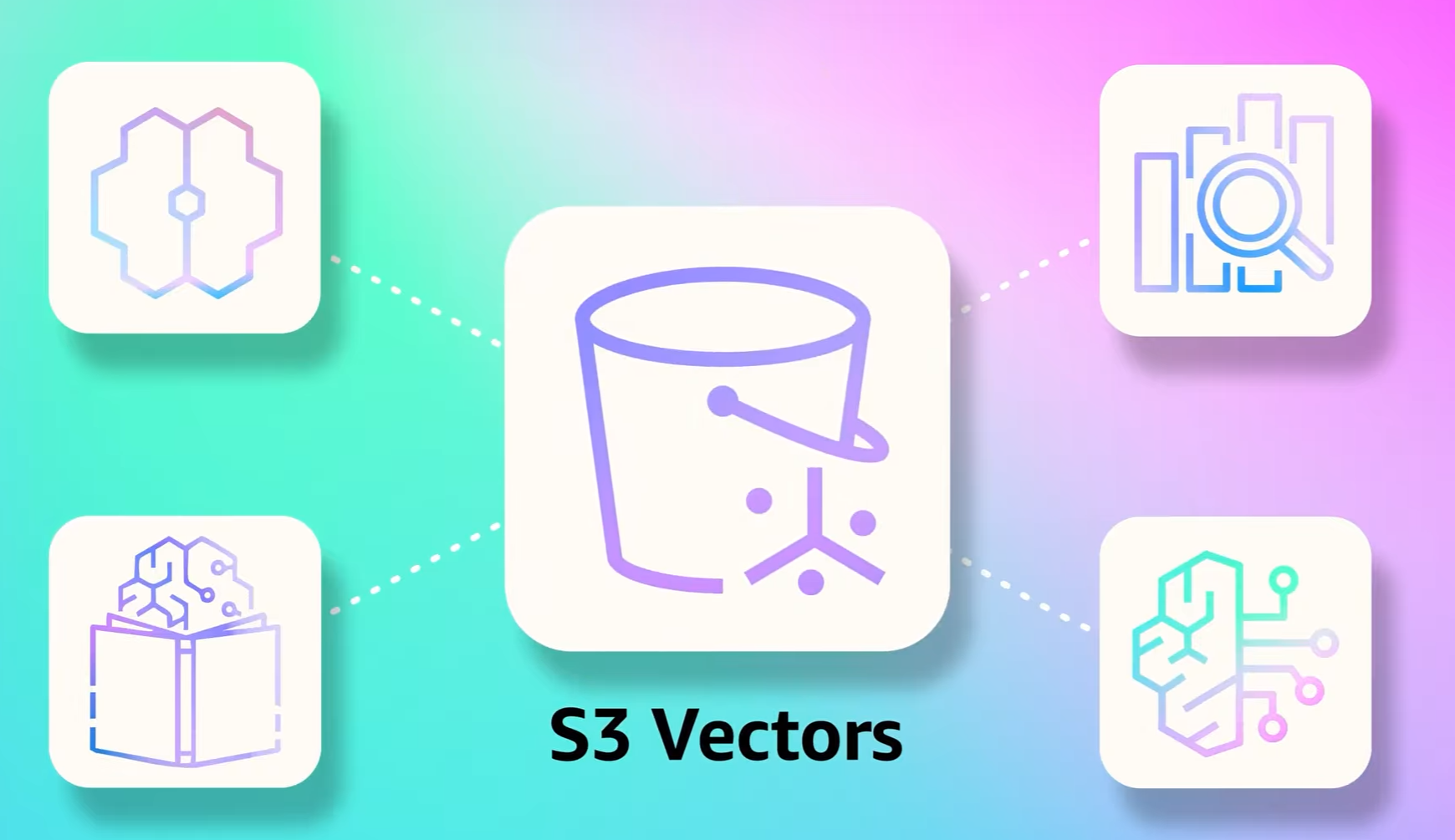
AWS Launches S3 Vectors

AWS this week launched Amazon S3 Vectors, a new type of bucket that enables customers to store and query a large number of vector embeddings directly within S3. AWS says the new cloud offering delivers sub-second query response from S3 while cutting the cost of vector queries by up to 90%.
Vector embeddings are compressed representations of unstructured data, such as images, text, videos, and audio, and are a key component of the emergent AI paradigm. Organizations use vector embeddings, vector indexes, and similarity searches to improve the quality of Web searches (dubbed vector search) as well as to improve the memory and recall of relevant data as part of generative AI and agentic AI applications, a process known as retrieval-augmented generation (RAG).
Customers can store billions of vector embeddings in S3 Vectors, which features its own dedicated set of APIs to store, access, and query vectors without provisioning any additional infrastructure, according to AWS. The offering is pre-integrated with Amazon Bedrock Knowledge Bases, including within Amazon SageMaker Unified Studio, and also works with Amazon OpenSearch Service, which supports in-memory vector storage and retrieval.
While Amazon OpenSearch is optimized for fast vector retrieval for a lower number of objects, S3 Vectors is optimized for cost efficient vector storage of a larger number vectors. Customers can move vectors back and forth between OpenSearch and S3 Vectors depending on the needs of the application, the company says.
“With S3 Vectors, you can now economically store the vector embeddings that represent massive amounts of unstructured data such as images, videos, documents, and audio files, enabling scalable generative AI applications including semantic and similarity search, RAG, and build agent memory,” writes Channy Yun, a principal developer advocate for AWS Cloud, in a blog post.
“You can also build applications to support a wide range of industry use cases including personalized recommendations, automated content analysis, and intelligent document processing without the complexity and cost of managing vector databases,” he continues.
There are many potential use cases for S3 Vectors. AWS says it could be used by media companies to index millions of hours of video to instantly surface relevant scenes. Healthcare providers, meanwhile, could vectorize billions of medical images to help accelerate diagnoses of illness.
AWS already has several customers, including BMW, which is using S3 Vectors to provide vector search capabilities with its central data platform, which is based in part on Apache Iceberg. Another early adopter is Backlight, a media company that’s using S3 Vectors to enable their customers to enrich their video libraries. Twilio is using S3 Vectors to improve its customer engagement platform with RAG-enabled AI, while xCures is using S3 Vectors to better identify “meaningful medical content” with its AI-assisted healthcare data platform.
AWS bills for S3 Vectors based on the number of vectors customers upload; the amount of data customers store across vectors, metadata, and keys; and the number of times customers query their vectors. For more information, see https://aws.amazon.com/s3/pricing/.
Related Items:
AWS Unveils Hosted Apache Iceberg Service on S3, New Metadata Management Layer
Inside AWS’s Plans to Make S3 Faster and Better





























